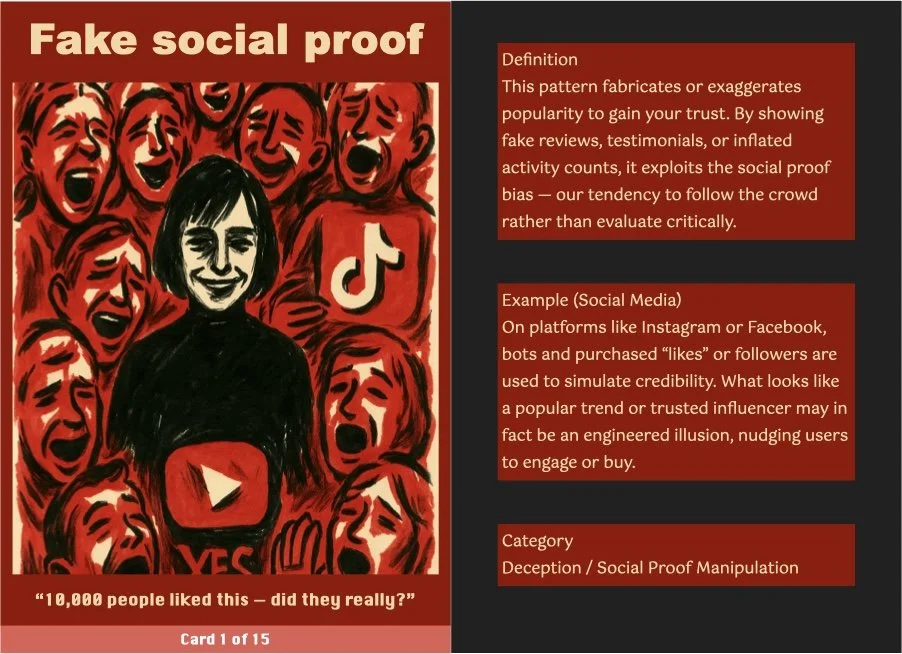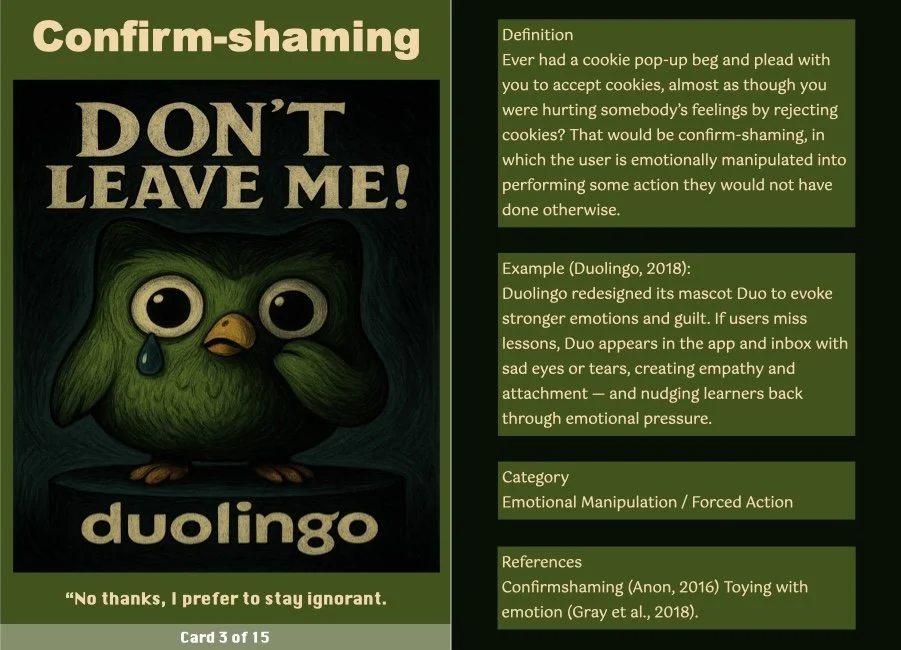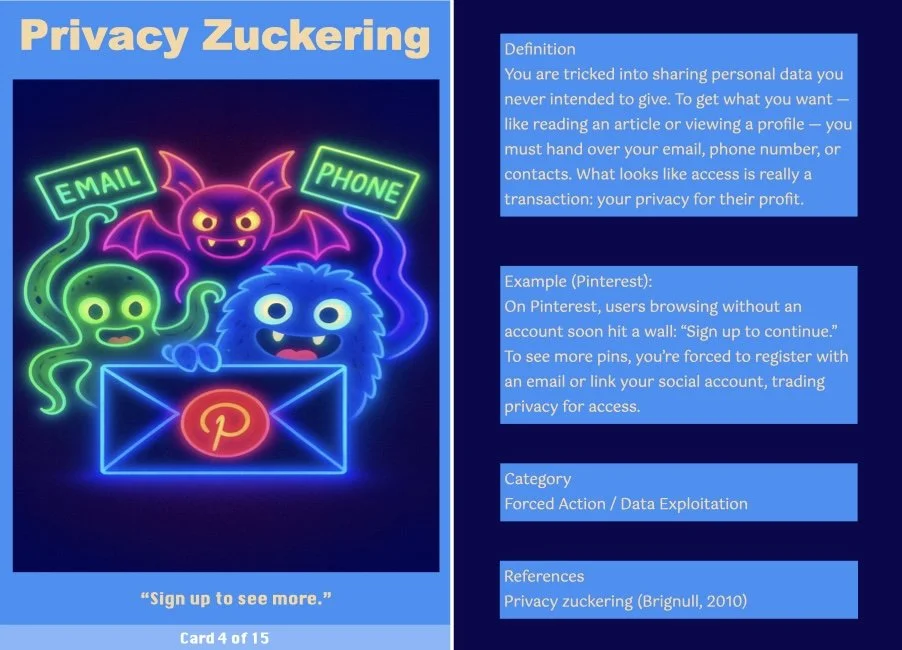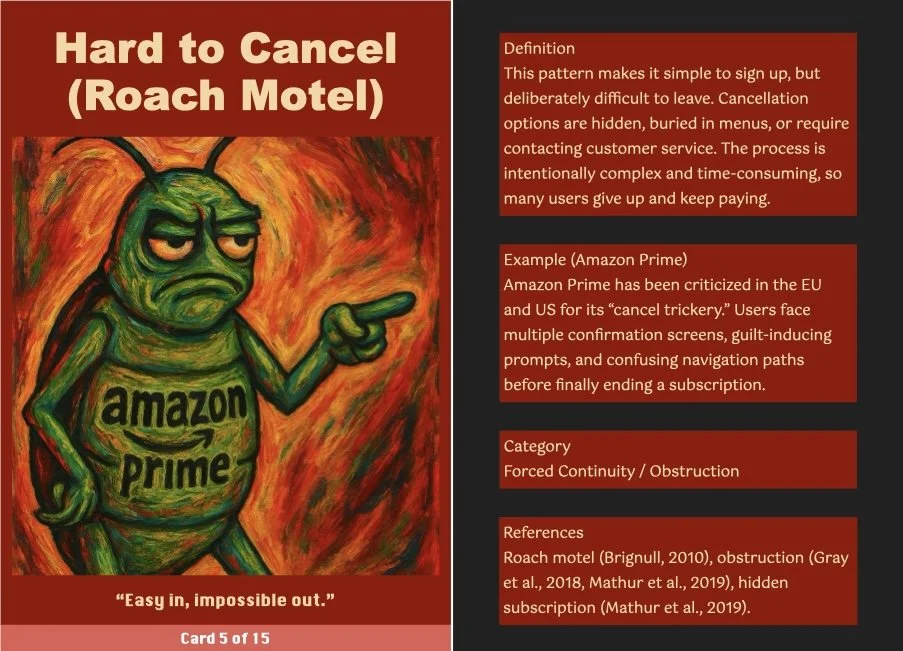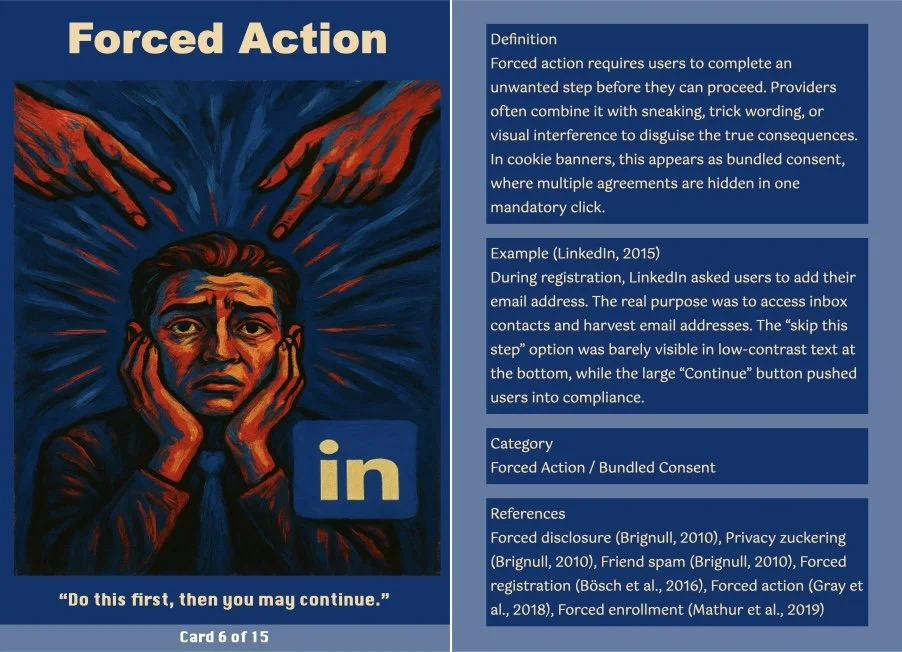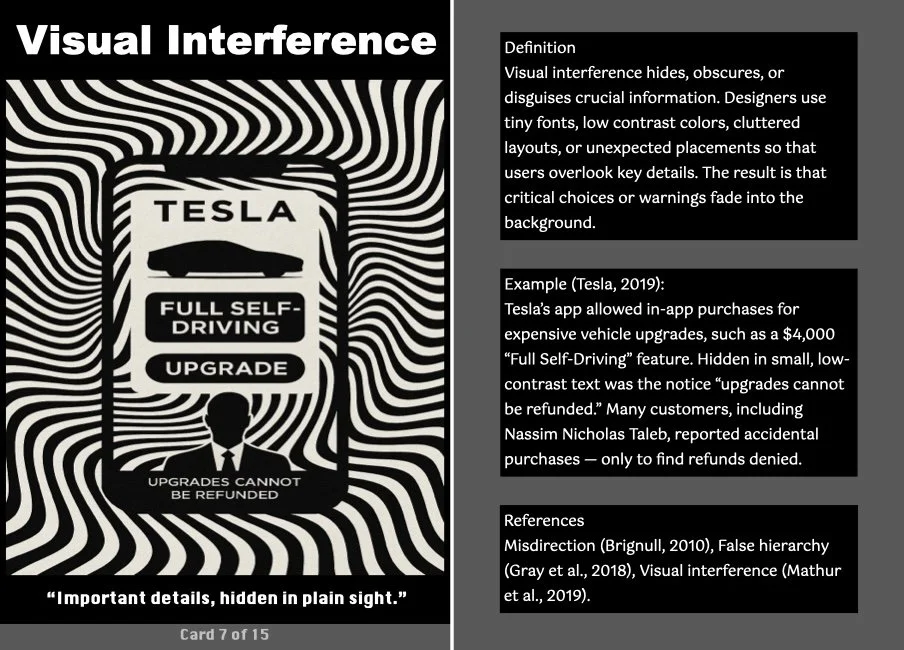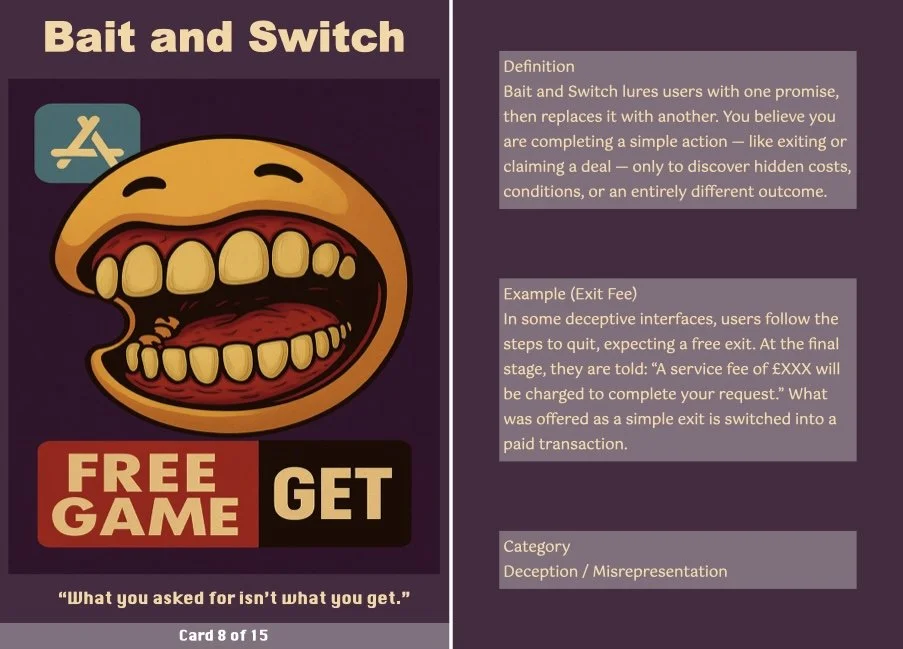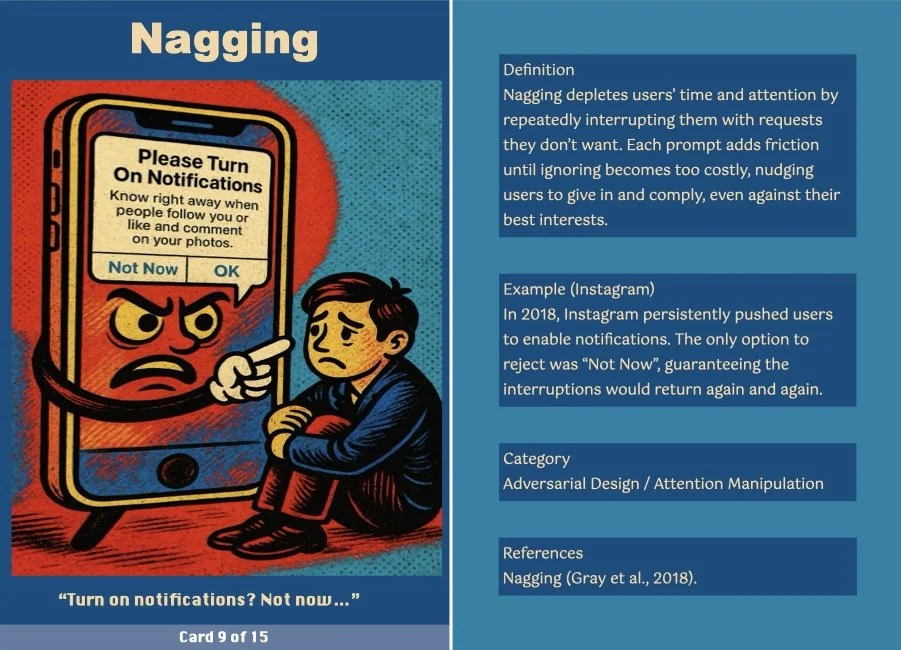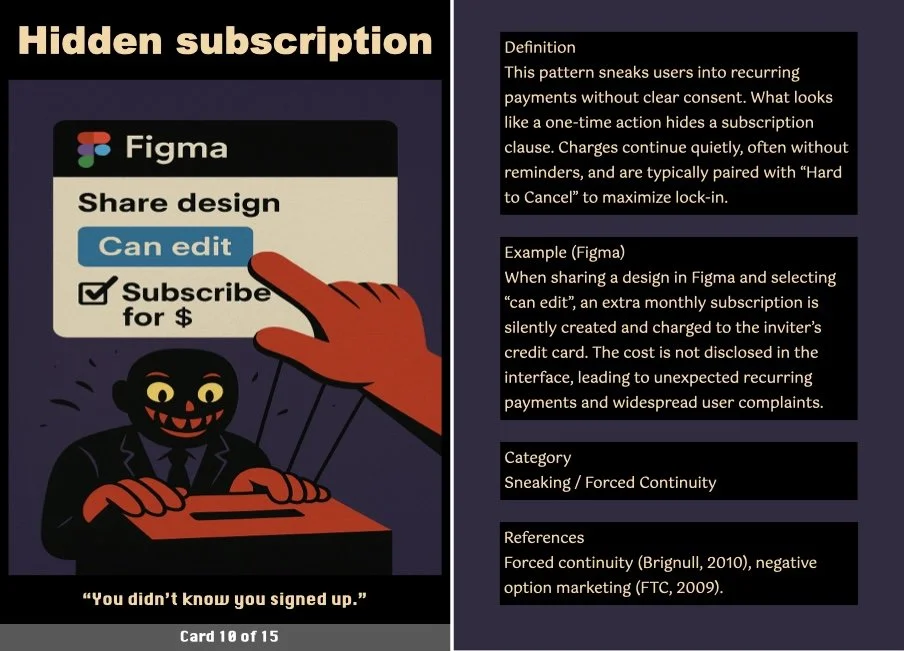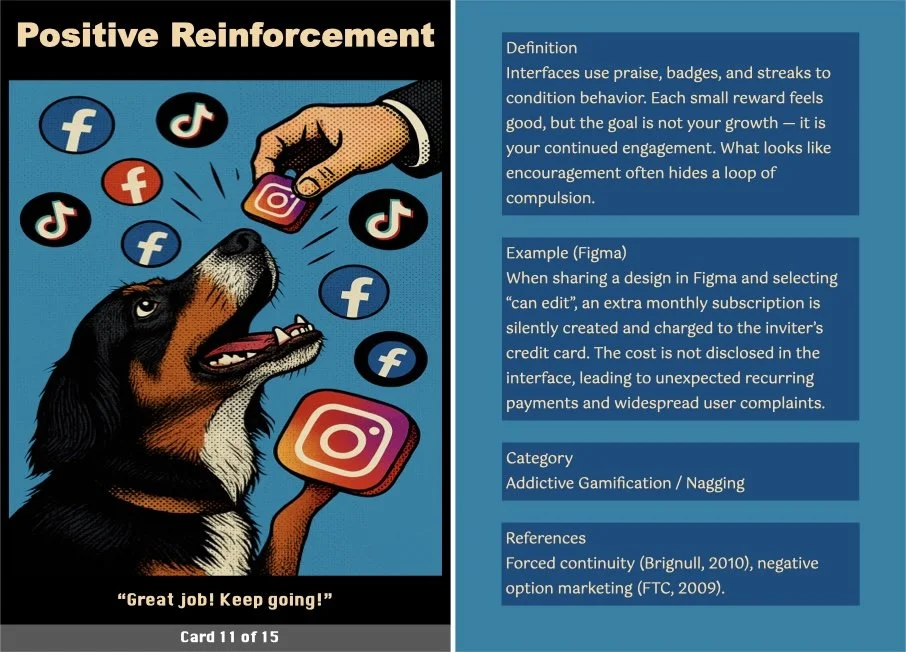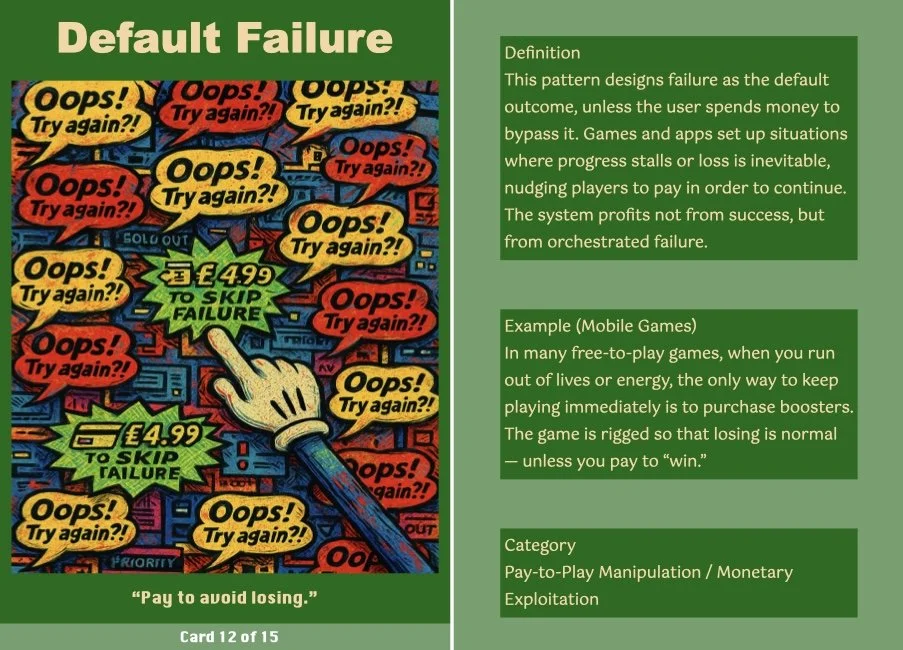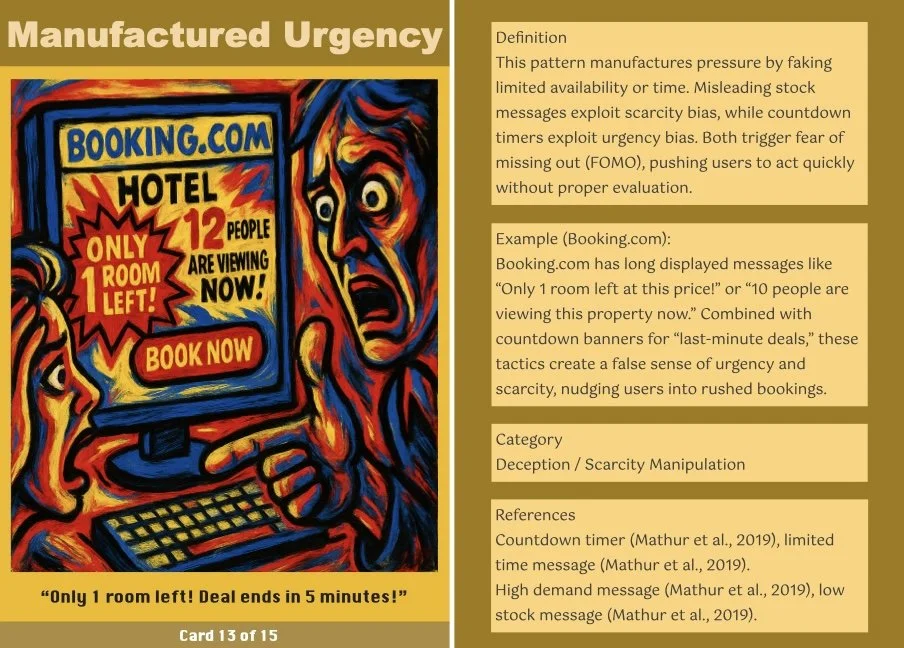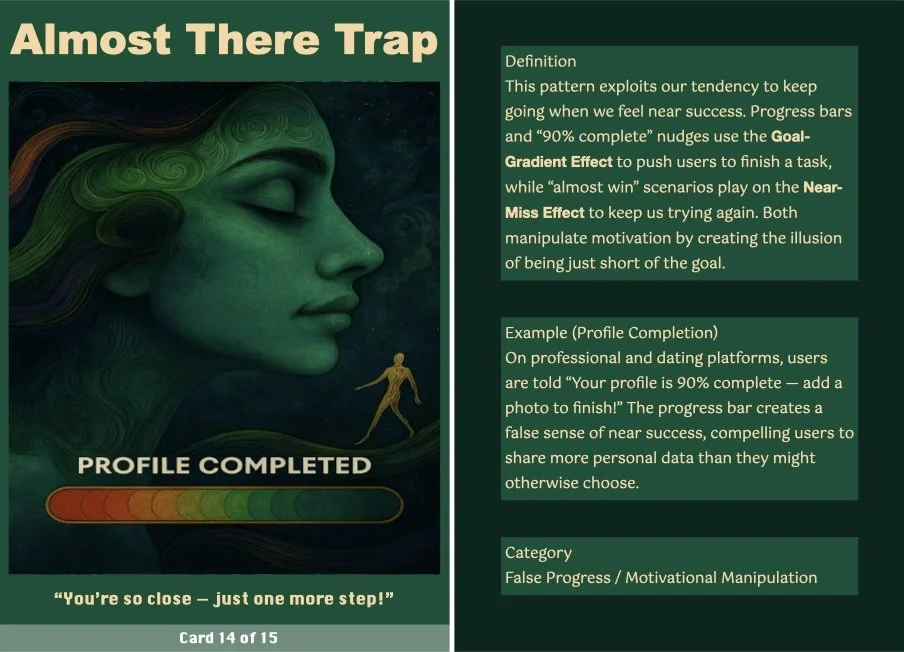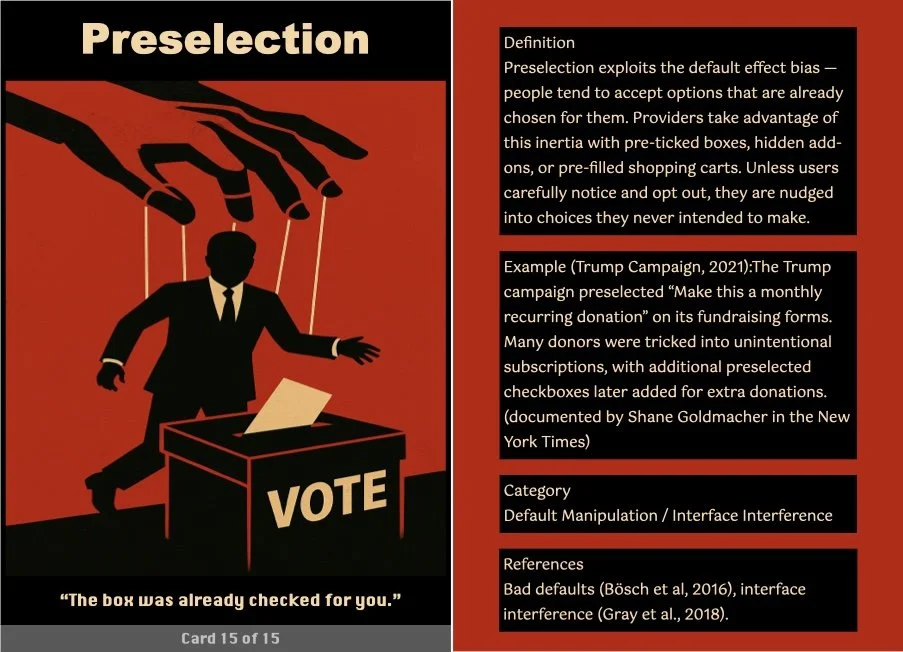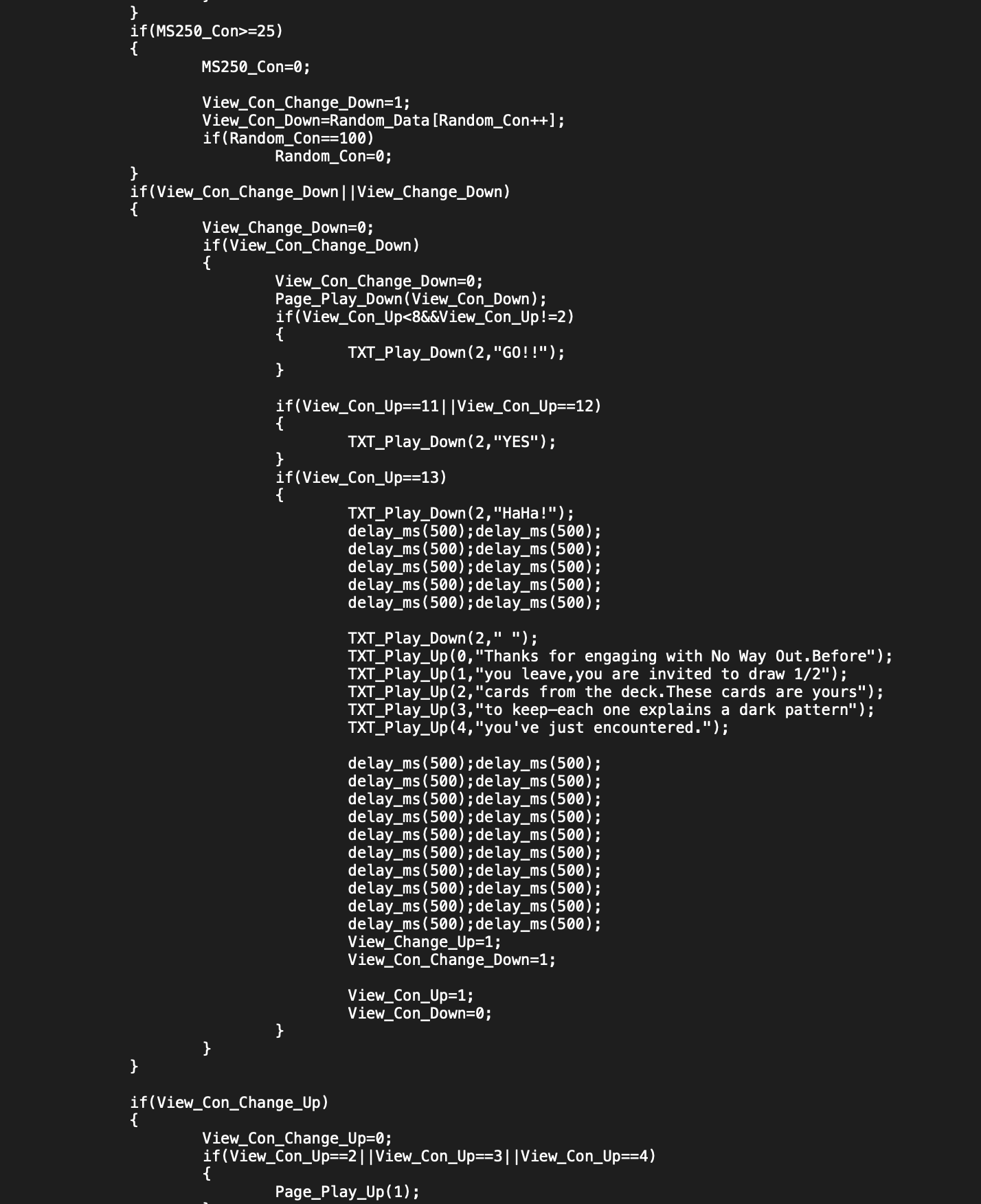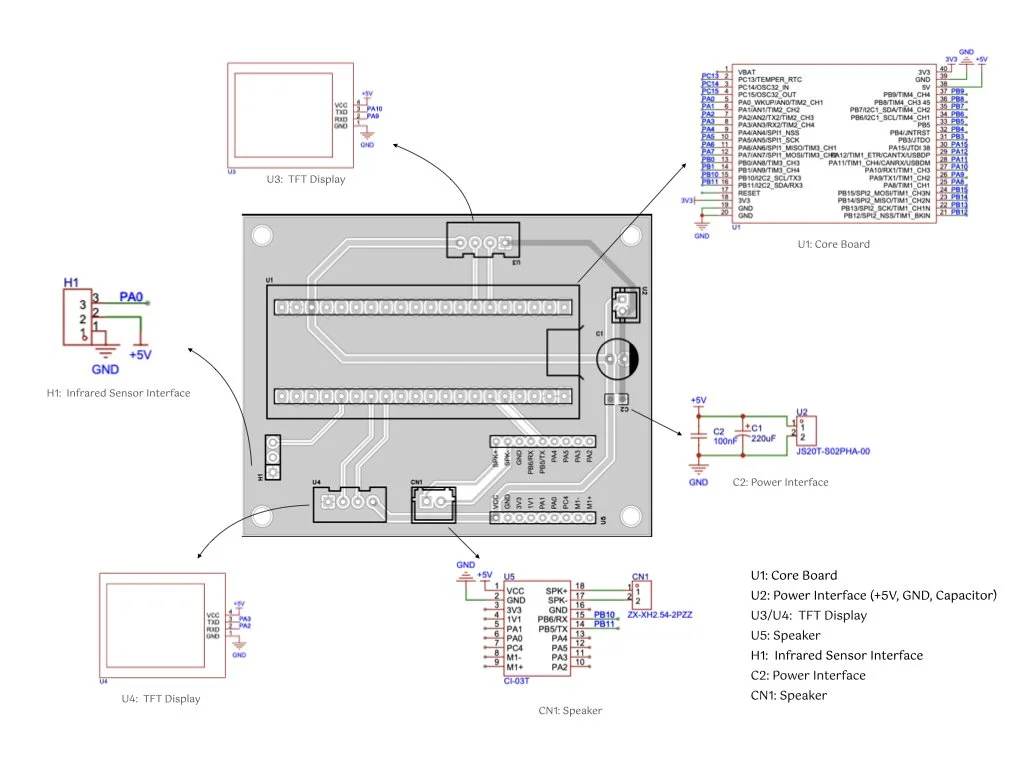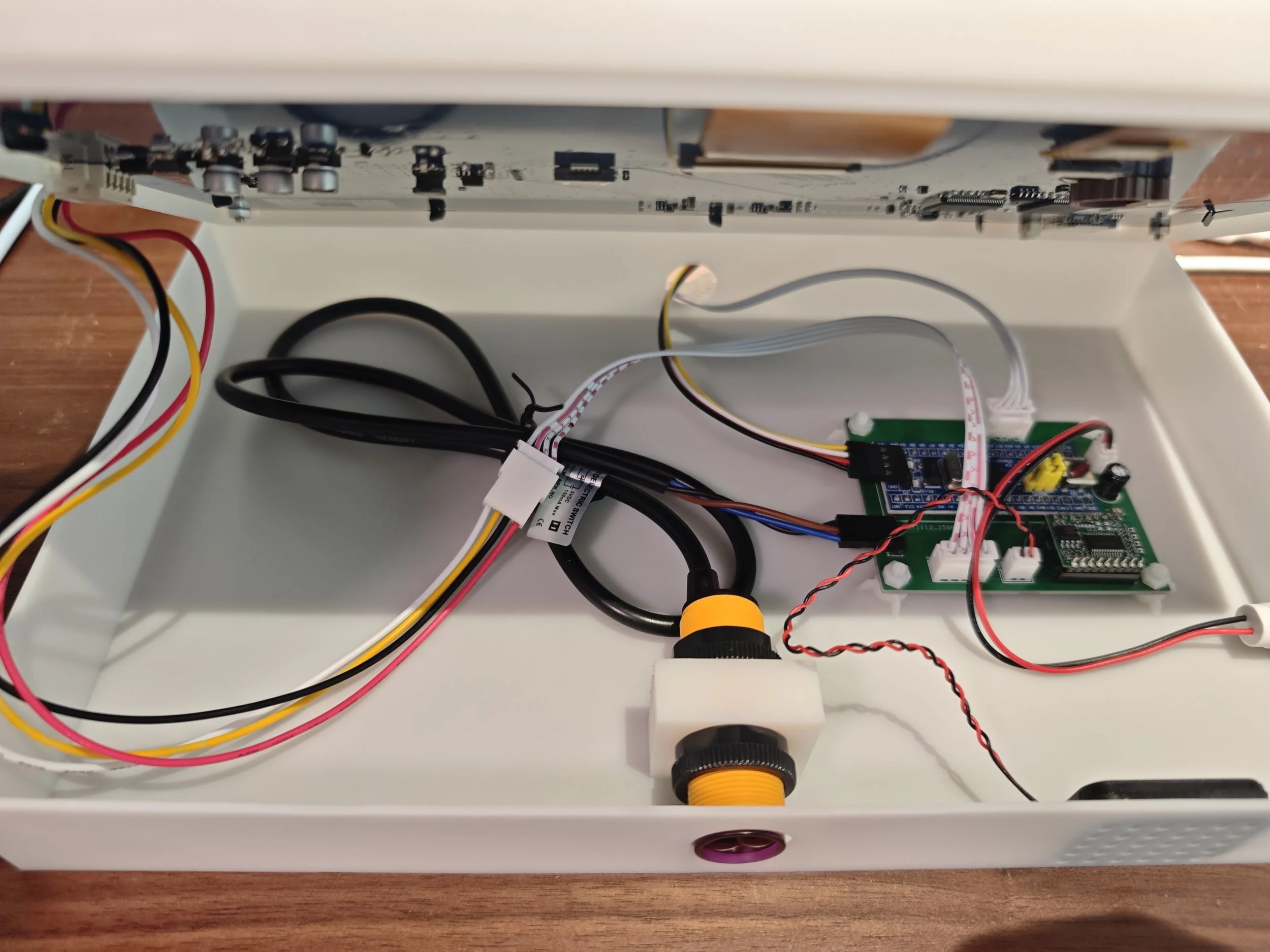
No Way Out, Installation, 2025
A Critical Exploration of Dark Patterns Through Gamified Interaction
Xuefei Yang | Practice-Led Research | MA Experience Design
What does it mean to design for control, and how might we design against it?
You walk up to a familiar-looking screen. There’s a button that says “EXIT”, but as you reach out, it disappears. The timer ticks. A new message appears: “Just one more step.” Then another: “89% of players succeed.” Before you know it, you’ve given away your name, your email, and your consent.
No Way Out is a dual-screen interactive installation that exposes the hidden manipulations embedded in everyday digital interfaces, what design theorists call “dark patterns.” Framed as a game that cannot be won, the project invites visitors to experience coercion, surveillance, and frustration firsthand through a carefully scripted sequence of pseudo-interactions, evasive buttons, and ambient pressure mechanisms.
Concept
In a digital world where interfaces are no longer built to serve, but to extract, this installation translates manipulative design practices into a physical, interactive experience. From vanishing exit buttons to fake loading screens and involuntary data disclosure, every element mimics and even exaggerates the deceptive tactics that platforms use to steer, nudge, and exhaust users into compliance.
Unlike traditional critique, No Way Out doesn’t describe dark patterns; it makes you live through them. Grounded in critical design, the work reframes UX not as problem-solving, but as power scripting. It draws from the psychopolitical insights of Byung-Chul Han, the habitual logics of Wendy Chun, and empirical mappings of deceptive UI from Mathur et al., staging a dramaturgy where design itself becomes coercion.
Interaction
Interaction
Visitors journey through a 14-step interactive sequence that simulates how contemporary digital platforms subtly manipulate users into compliance. From fake countdowns and pseudo-choices to forced data disclosure and ambiguous consent, every step is designed to feel familiar and disturbingly inescapable.
① Phase 1: Persuasive Engagement
At first, visitors are gently nudged with encouraging prompts like “You’re so close!” and manipulated through gamified feedback and social proof cues like “89% of users succeed.” This phase parodies persuasive design techniques seen in platforms such as Duolingo, Tinder, or Instagram, where success always seems near, but never quite reachable.
② Phase 2: Procedural Capture
Once exit intent is detected, the tone shifts. Users are asked to submit personal data to “process” their exit, navigate through opaque cookie policies, endure artificial waiting times, and even accept a fabricated service fee, before finally arriving at the message: “Exit complete. Thanks for playing.” This phase captures the logic of forced consent and bureaucratic obstruction, where escape is technically allowed, but emotionally and cognitively discouraged.
Ambient Control: Surveillance as Pressure
To intensify the sense of being monitored, infrared sensors detect hesitation or withdrawal. If a user pauses for too long or physically steps away, an audible alarm is triggered, turning private indecision into public exposure.
This ambient control system replicates the affective coercion embedded in many digital environments, where being watched becomes a subtle but powerful form of discipline.
The Card Ritual
As a final gesture, visitors are invited to draw a printed card from a deck. Each card represents a real-world dark pattern, such as ‘Roach Motel,’ ‘Privacy Zuckering,’ or ‘Confirmshaming, and links it to a known digital platform like Facebook, TikTok, or Adobe.
This ritual transforms the critique into a tangible takeaway, making it a more engaging and interactive experience. The cards serve as both mementos and critical prompts, inviting users to reflect on how these patterns operate in their own digital lives.
Technical Setup
No Way Out is housed in a custom-built casing that resembles a minimalist, dual-screen computer terminal—clean, structured, and eerily familiar. Its physical form echoes the aesthetics of everyday digital devices, underscoring how manipulation can hide behind interfaces we trust.
The installation features two 10.1-inch LCD displays arranged at a right angle: the vertical screen delivers narrative prompts and systemic feedback, while the horizontal touchscreen invites direct user interaction. On this lower screen, an “EXIT” button appears to offer a way out—but as visitors attempt to press it, the button shifts, disappears, or relocates, evading input through real-time programmed responses.
A microcontroller—Arduino or STM32—coordinates the entire interaction flow, integrating proximity sensors to detect hand movements and trigger evasive behaviors. Capacitive or infrared sensors are used to anticipate user intent, while embedded timers and logic structures generate delays, conditional paths, and false feedback loops.
To simulate the affective dimension of digital coercion, the installation incorporates an alarm system: if a user hesitates too long or tries to physically withdraw, an audible alert sounds—transforming private hesitation into public exposure. Every moment of delay or resistance is captured and recoded as a point of control, rendering the interface not as a tool for interaction but as a mechanism for behavioral capture.
Research Methodology
No Way Out is grounded in a hybrid methodology that combines making, playing, and critique. Drawing from practice-led research, the project uses iterative prototyping not simply to visualize ideas, but to generate embodied insights into how manipulation is felt and enacted. It also draws from Friedrich Schiller’s conception of play as a condition of human freedom and aesthetic self-realization. In No Way Out, play is not framed as entertainment, but as a critical and affective mode that awakens awareness. Lastly, the project follows the tradition of Critical Design (Dunne & Raby), not to provide solutions, but to stage problems, to surface the hidden scripts of coercion embedded in everyday interface design.
Audience Testing
User testing played a central role in refining No Way Out. Participants first engaged with a text-based prototype, navigating through a simulated version of the interaction flow while their actions and facial expressions were video-recorded.
Insights
Analysis revealed two key patterns:
• Clicking slowed significantly in the second phase (Steps 8–13), indicating rising emotional engagement when data submission and payment were introduced.
• Many participants hesitated or looked confused at the “Exit Complete” screen; some even kept clicking, unsure whether the experience had ended.
These reactions suggest that manipulative design doesn’t rely on visual deception alone. Instead, its power lies in how it conditions user behavior over time, through uncertainty, repetition, and emotional friction. This helps the project reframe dark patterns not as static visuals, but as temporal, embodied systems of control. Feedback also informed key refinements, including the addition of the final card-drawing ritual and the hesitation-triggered alarm.
Exhibition
September 18-26
Levinsky Gallery
University of Plymouth
The exhibition brought together critical and speculative works from graduating MA students, exploring how design can intervene in contemporary social, digital, and ecological challenges. Set within the heart of the university’s public-facing art space, No Way Out invited visitors to physically engage with the hidden mechanisms of manipulation embedded in everyday digital interfaces.

